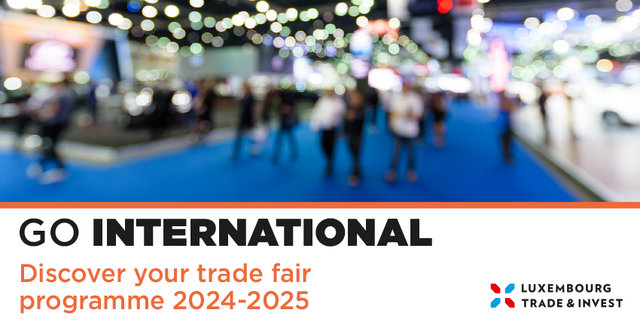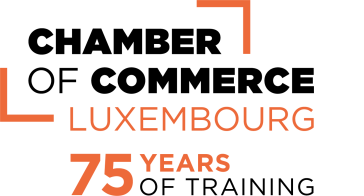
Economic Affairs

The Global Entrepreneurship Monitor (GEM) is a study based on an “Adult Population Survey” (nationally representative statistical survey of 2033 people of the active population) and a “National Expert Survey” (qualitative survey of 36 experts). Thereby, the GEM provides findings from the entrepreneurial as well as the non-entrepreneurial population.
The GEM especially looked at the impact of governmental initiatives such as nyuko, Fit4Entrepreneurship and Fit4Start which try to raise entrepreneurial spirit by informing the public but which also provide training and financing. These initiatives have already been mentioned in the Commission’s SME report of November 2018 and were described as highly positive examples - just like they are depicted in the GEM.
Entrepreneurship: a cross-country perspective
In general, “Infrastructure” and “Government policies” are identified as strong points regarding the Luxembourg entrepreneurial ecosystem while “Financing” and “Resource availability” in terms of office spaces and qualified staff are considered the main obstacles to entrepreneurship.
Luxembourg residents value the country as a good place to start a business and think that Luxembourg offers a more dynamic environment for entrepreneurship in comparison to other European countries. Regarding their own profile, they perceive themselves as relatively well skilled but rather risk averse (more so than residents in neighboring countries). Entrepreneurship itself is seen less as a good career choice than it is in other European countries – the media being said to have a high impact on this image. It is precisely this perception of entrepreneurship that was pointed out as one of the biggest obstacles to Luxembourg entrepreneurship within the Commission SME report published last November. Once, businesses are launched, however, they fare well. In Luxembourg, a considerably higher number of entrepreneurs (11%) exits their own business because of opportunities of selling it than in other European countries (2%). Luxembourg entrepreneurs make up 9.3% of the population compared to 8.3% on a European level.
A profile of Luxembourg’s entrepreneurs
There is still a big, untapped “potential for entrepreneurship” with 20% of men and 16% of women having “entrepreneurship intentions”, 26% of those aged 18 to 34 (compared to 8% of those aged 55 to 64) and 22% of those with higher education (compared to 16% of those with lower education. That is to say that the intentions of launching an entrepreneurial career diverge along gender, age and educational dimensions. The “Entrepreneurship gap” existing between total early-stage entrepreneurs (TEA) also varies according to the three dimensions with 12.5% of men being business owners but only 5.9% of women and 11.9% of those aged between 18 and 34 years but only 4.3% of those aged between 55 and 64 years. Concerning established entrepreneurs (owner-managers of a firm older than 42 months that has paid wages at least during the last three months), the gender gap is less pronounced with slightly more women (3.7%) than men (3.2%). For early-stage entrepreneurs (EEA), the same gaps exist.
Concerning individual motivation and self-attributed capabilities, 41% of the Luxembourg population believe to have the needed skills to start a business compared to 43% in Europe. 53% of population perceiving good opportunities to start a business, however, report that fear to fail would stop them from starting a business (compared to 37% across Europe). The category “fear to fail” has already been mentioned in the Commission’s recent SME report as one of the biggest hindrance regarding entrepreneurship in Luxembourg with the reasons behind being at least two-fold: first of all within the mentality but also in legal terms with a law on bankruptcy still being underway.
Creative activities: tinkers and inventors in Luxembourg
The proportion of “regular tinkers” who play around and modify items in their free time is higher among entrepreneurs (27%) than among non-entrepreneurs (22%) with 5% of all individuals saying they would regularly invent new items, 21% did so occasionally.
Results from the “National Expert Survey”
For Luxembourg, the three “Entrepreneurial framework conditions (EFC)” with the highest value on a scale from 1 to 9 are: “Physical infrastructure” (6.9), “Government entrepreneurship programs” (5.7) and “Commercial and professional infrastructure” (5.7). In contrast, “Entrepreneurship education at primary and secondary school” (3.2), “Internal market dynamics” (3.5) and “Financing for entrepreneurs” (4.1) are the 3 EFCs with the lowest value.
Barriers and enablers of entrepreneurship
More than half of TEA entrepreneurs are at least somewhat agreeing that dedicated training programs are available and that they can easily access needed information. 50% of entrepreneurs are at least somewhat agreeing that it is easy to access potential customers compared to nearly 25% of non-entrepreneurs, thereby suggesting a strong difference in entrepreneurs’ and non-entrepreneurs’ perception on reporting difficulties to access funding (20% and 25%), to find office spaces (21% and 14%) and to find qualified human resources (33% and 25%). Regarding “Easy access needed information to start my company”, 46% of non-entrepreneurs and 53% of entrepreneurs at least somewhat agree.
Results from the Luxembourg “Adult Population Survey”
Measuring entrepreneurship in Luxembourg over time
Total early Stage entrepreneurial activity (TEA) was found to be at 9.3% in Luxembourg in 2017, thereby being stable over time as well as above the EU average of 8.3%. TEA are defined as “nascent entrepreneurs” (individuals that are involved in setting up a business, and who have paid wages to employees or to themselves for less than three months) and “new entrepreneurs” (who are owner-managers of firms that have paid wages for a period of time between 3 and 42 months). Nearly 21% of respondents declared themselves as potential entrepreneurs or already engaged in some form of entrepreneurial activity while nearly 7% of respondents are setting up a new business as part of their regular work as employees (compared to a European average of 4.4%), an activity that is defined as “Entrepreneurial Employee Activity” (EEA). In 2017, nearly 40% of “Gross Entrepreneurial Behaviour” (TEA + EEA) in Luxembourg took place in established firms.
Political ecosystem and framework conditions – Policies, immigration and well-being in Luxembourg
Policies
In Luxembourg, a positive association between the provision of entrepreneurial training and setting up and running a new business prevails. Training programs seem relatively popular as well as known among entrepreneurs, which does not mean that training has directed them towards becoming entrepreneurs in the first place but that entrepreneurs might still find the training useful.
Campaigns or initiatives of institutional actors (Chamber of Commerce, Government, etc) such as the above-mentioned nyuko, Fit4Entrepreneurship, Fit4Start, etc. have raised an interest among 13% of the total population with percentages being considerably higher among entrepreneurs than non-entrepreneurs (34% to 10%). There is a clear positive association between initiatives supporting entrepreneurship and the idea of getting a business up and running.
Immigration
Furthermore, migrants are highly represented in early stage entrepreneurial activities with percentage figures being 10.5%, 7.6% and 7.3% for the first, second and third generation respectively. Most migrants’ startups are created in the services’ sector.
Well-being
Concerning their personal well-being, 13.9% of TEA entrepreneurs declare to be satisfied with their life (a figure lower than for those people that never engaged in entrepreneurship or that are running an established venture). Furthermore, findings are that women entrepreneurs are more dissatisfied than their male counterparts.
The entrepreneurial ecosystem – New ventures: founders, size, activity, innovativeness and funding
In Luxembourg, most businesses have a sole founder (a finding that has been stable over time). While sole entrepreneurs might be regarded as self-employed, the results suggest that entrepreneurship is not fully captured by the term of “self-employment”. Nearly half of new and established businesses are run by more than one entrepreneur.
90% of TEA firms have less than 6 employees with nearly 30% of these companies having no employees at all. The above-mentioned differences along gender and education dimensions can also be seen here– regarding the age dimension, it is inverse with older people employing more people. There is no correlation between employing many employees and an increase in household income. 16% of entrepreneurs with a household income of less than 60.000 EUR are employing more than 5 employees. For entrepreneurs with more than 60.000 EUR of income, it is only true for 8% of them that they employ 5 or more people. There seems to be a link between the phase of establishment of the company and the number of employees with established entrepreneurs hiring more employees than TEA.
Roughly 50% of TEA (compared to a European average of 28.7%) are innovative (defined as a product that is new to all or some customers and that is offered by few or no other businesses) compared to 25% of established firms.
TEA entrepreneurs as well as established entrepreneurs are most likely active in the service industry. Men are mainly active in transforming industries and the service industry while women are more active in education, health and other services.
In 2017, in relative terms, SMEs are paying 46% more in interest than large corporations since in Luxembourg, loans below 1 million EUR are 54 basis point more expensive than loans above 1 million EUR. This underlines the importance of SMEs but explains also their need for external sources of funding. In this respect, 7% of respondents declare to have already provided funds (loans or equity) for a new business started by someone else with 50% giving less than 10.000 EUR, 26% between 10.000 – 50.000 EUR and 24% more than 50.000 EUR. According to the study’s findings, close family and friends provide for most of the financing.



